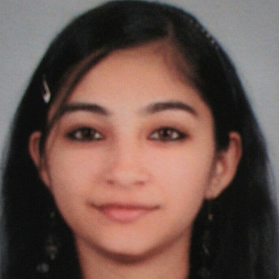
Vidhi R. Shah
Work place: SVM Institute of Technology/CSE, Bharuch-392001, India
E-mail: vidhishah441995@gmail.com
Website:
Research Interests: Computer Architecture and Organization, Image Compression, Image Manipulation, Image Processing, Data Structures and Algorithms
Biography
Vidhi R. Shah is currently a student at the S’ad Vidya Mandal Institute of Technology, Bharuch, India affiliated to Gujarat Technological University. She is in the department of Computer Science and Engineering. She has recently completed research on obstacle detection in vehicles for intelligent transportation system (ITS) under the supervision of Prof. Rutvij H. Jhaveri.
She has also published a paper titled “obstacle detection in vehicles for intelligent transportation system (ITS) in well known conference INDIAcom-2016 of IEEE publication. Her research interests include object detection and image processing.
Author Articles
An Obstacle Detection Scheme for Vehicles in an Intelligent Transportation System
By Vidhi R. Shah Sejal V. Maru Rutvij H. Jhaveri
DOI: https://doi.org/10.5815/ijcnis.2016.10.03, Pub. Date: 8 Oct. 2016
Road obstacles cause serious accidents that have a severe impact on driver safety, traffic flow efficiency and damage of the vehicle. Detecting obstacles are important to prevent or to reduce such kind of the accidents and fatalities. However, it is difficult and becomes tricky because of some problems like presence of shadow, environmental changes or a sudden action of any moving things (e.g., car overtaking, animal coming) and many more. Thereby, this paper aims to design an obstacle detection technique based on (i) moving cameras and (ii) moving objects. These methods are applied to obstacle detection phase, in order to identify the different obstacles (e.g., potholes, animals, stop sign, obstacles, bumps, road cracks) by considering road dimensions. A new technique is introduced for detecting obstacles from moving camera and moving objects which overcomes several limitations over stationary cameras and moving/stationary objects. Further, paper reviews recent research trends to detect obstacles for moving cameras and moving objects with discussion of key points and limitations of each approach. Finally, the results show that the proposed method is more robust and reliable than the previous approaches based on the stationary cameras.
[...] Read more.Other Articles
Subscribe to receive issue release notifications and newsletters from MECS Press journals